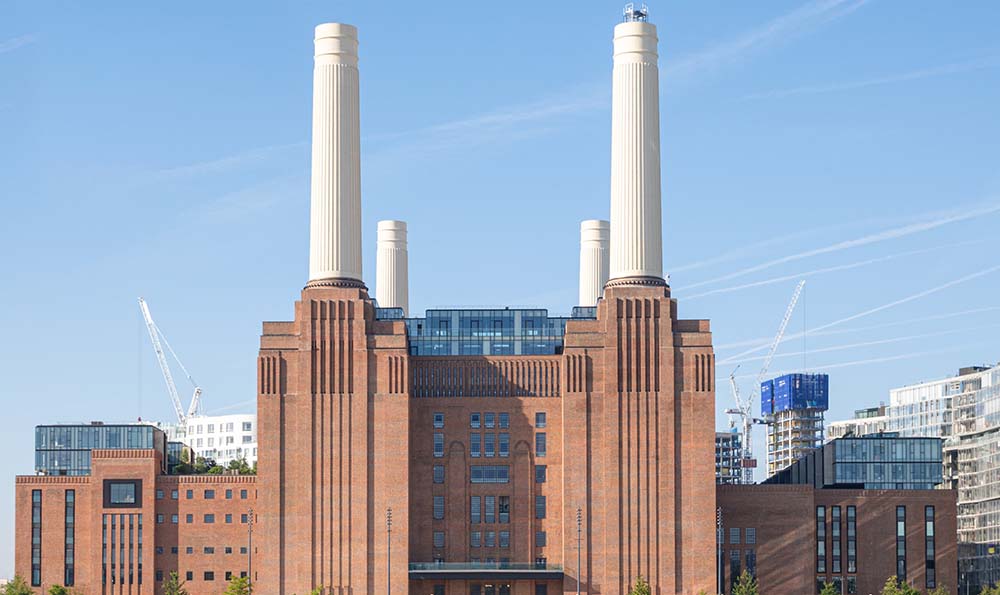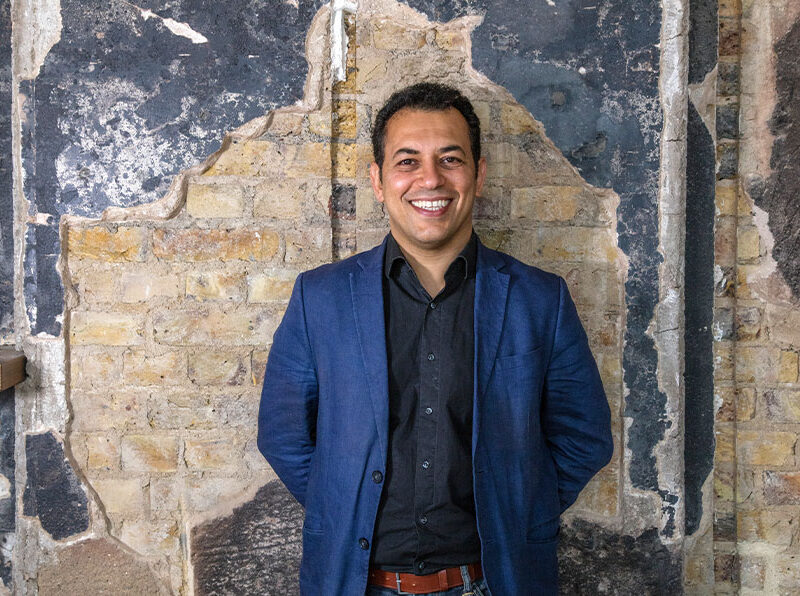
Battersea Power Station reopens
Battersea Power Station reopens
The iconic building is back!
With its towering chimneys, Battersea Power Station has become one of our most distinctive London landmarks. Its smoke guided RAF pilots back home in the war, the impressive façade played backdrop to Pink Floyd’s legendary album cover and it has appeared in countless films including The Dark Knight.
Its story began in 1929, when Sir Giles Gilbert Scott, one of the most prominent architects of the day – he’d designed our red telephone boxes and Waterloo Bridge – was brought in to work on a new power station. It was hardly the most glamorous of projects but he made it so – it grew to be one of the most famous of London’s buildings, and by the time it was completed in 1935, it was filled with the most incredible Art Deco details and was not only useful for supplying the capital with electricity but rather striking too.
Demand for power increased and so plans were set in motion to ramp up its capacity. ‘Battersea B’ came into service in 1944, and the fourth and final chimney was added in 1955.
In its heyday, Battersea supplied London with a fifth of its power. And it was vast – so much so that St Paul’s Cathedral would fit inside the Boiler House.
Many relied on its electricity – it went out to Wimbledon, the Houses of Parliament and even Buckingham Palace (listed under the codename Carnaby Street 2 in the control room), as well as the BBC – in 1964, a power cut actually delayed the launch of BBC Two by a day.
But it ceased operations in 1983, and fell into disrepair. Various attempts were made to revive the building, including wild plans to turn it into a theme park. They weren’t to be and its fortunes looked bleak, with the building on Historic England’s ‘Heritage At Risk’ list.
Battersea Power Station: then and now
Middle image: Ian Liddell
Below: North Atrium: Backdrop Productions
Turbine Hall A: Backdrop Productions
Control Room A: James Parsons
The project was taken up by a consortium of Malaysian investors in 2012 and plans were made to turn it into a community of homes, offices, restaurants and shops. It was a mammoth task – particularly dismantling the crumbling chimneys that had to be rebuilt to exactly match the originals, but with more modern spec materials.
Circus West Village, the area adjacent to the power station, was the first section to open to the public in 2017 with restaurants, The Cinema in the Arches and the Turbine Theatre. Now it’s the turn of the power station building itself.
The new ‘high street’ Electric Boulevard has also opened: Gehry Partners designed the buildings to its east while Foster + Partners designed those to the west.
The entire area is a shopper’s paradise with brands including Ralph Lauren, Mulberry, and Hugo Boss lining the turbine halls and a huge Zara on Electric Boulevard. The Curated Makers store showcase works from around 40 local independent small businesses selling homeware, candles, clothing, and artwork. Gordon Ramsay’s Bread Street Kitchen has a new home there as does eco restaurant Clean Kitchen Club.
Even if you’re not a keen shopper, the building itself is a big enough draw. Closed to Londoners for decades, it has been a mystery to most as to what’s inside. The developers have done an incredible job of preserving original features – there is exposed brickwork and steel, you can even see the outlines of old staircases in the walls, Art Deco detailing remains and even some of the old equipment is in situ.
There is a 1950s-style bar in Battersea B’s control room. And the incredible Art Deco control room in the original Battersea A building will be a private events space.
There’s a cinema, and a chimney lift is set to open shortly, whizzing visitors to the top of the north west chimney to see the views over London. In 2023, a vast food hall will open. And there is a new hotel from art’otel, complete with a rooftop pool.
The £9bn project (which incorporates the entire mixed-use development, new neighbourhood and business quarter for London, Zone 1 extension to the London Underground Northern Line and the restoration of the Grade II* listed Power Station) has created thousands of jobs in construction and now in operational roles, with the developers creating the Battersea Academy for Skills & Employment to employ locally as much as possible. As well as all the retail and leisure offerings, it will be home to many businesses, including Apple’s London Campus. There’s a community choir, link-ups with schools, and initiatives to connect incoming businesses with local community groups and creatives to work on projects together.
Nearly forty years since the power station closed its doors, it’s incredible to see it brought back to life in a new guise.
https://batterseapowerstation.co.uk
Main image: Brendan Bell






